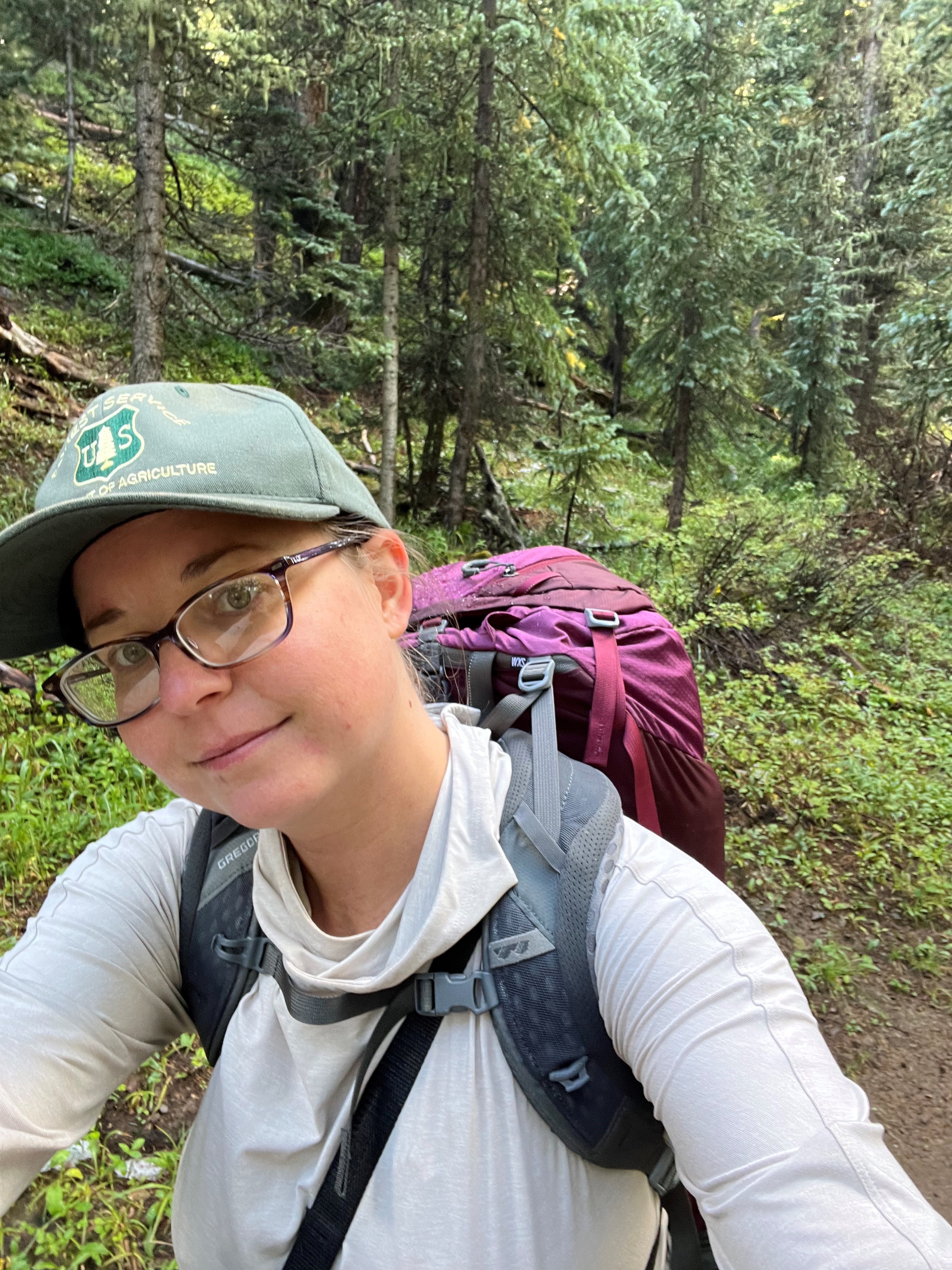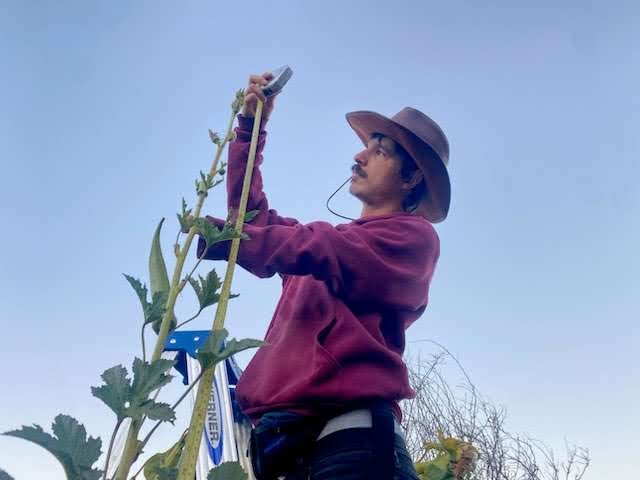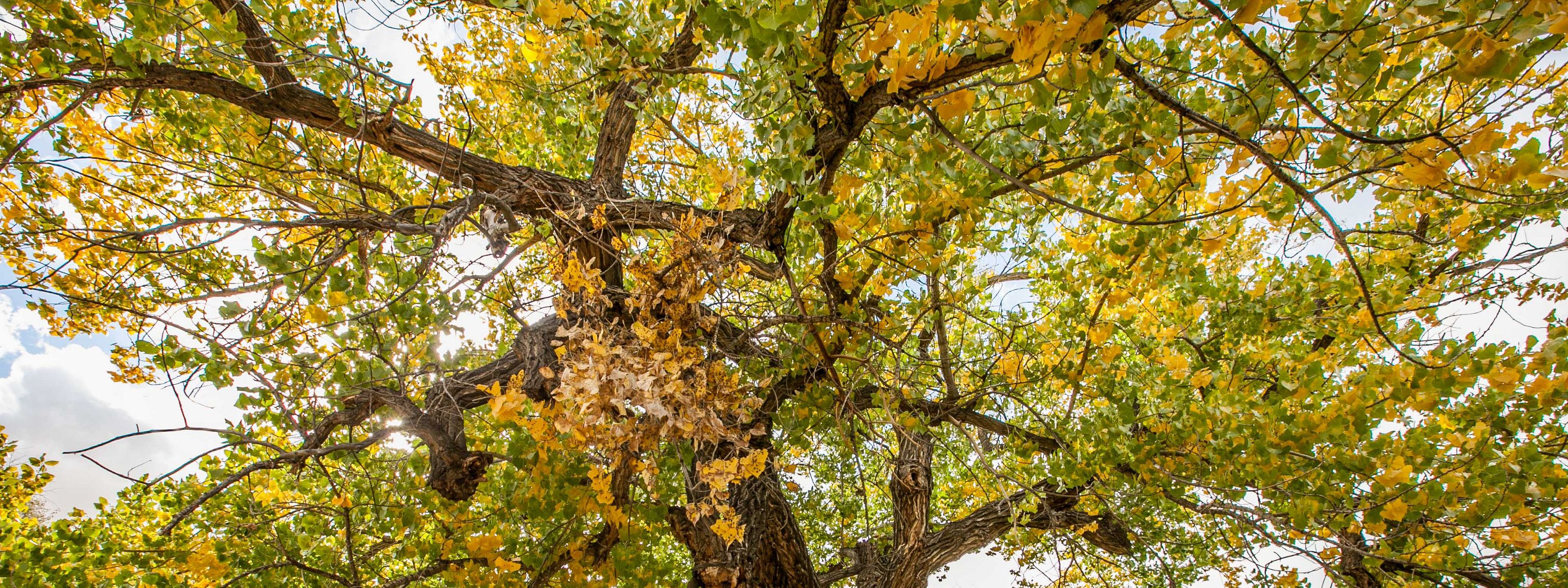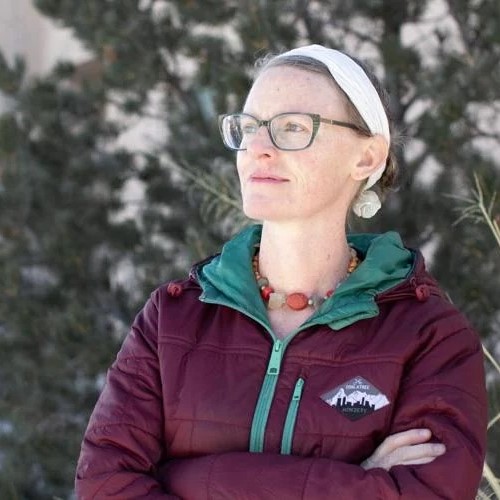New Faces in Nature Management
Q&A with New Mexico’s Emerging Nature Scientists
The Nature Conservancy and partners recently hosted a Forest and Watershed Jobs Fair promoting nature and restoration jobs, training and education programs on April 26 at the University of New Mexico in Taos. We met with students and alumni from their Leadership in Forestry Training (LIFT) and Natural Resource Management programs and discussed their jobs, motivation and how someone thinking about this kind of career might know if it’s a fit.
Peggy De’Scoville, wildlife intern with Carson National Forest
What is a typical day like for you in your job?
A typical day involves meeting at the office at 8 a.m. and making sure we have our equipment, bird callers, maps, etc. Then we hike for the day to different points on the map that have been preselected to survey for birds. Or we might meet at 6:30 p.m. and go out on a night hike to survey for Mexican spotted owl.
Sometimes we help fisheries and walk through streams collecting Rio Grande cutthroat trout. We are always in the most beautiful scenery—it’s a dream job.
Every day I am learning something new. I started last summer, and this internship follows me, allowing me to work when I am not in school and gives me time off while school is in session. Then, when I graduate with my master's, I will have an opportunity to be non-competitively hired into a permanent position.

Michelle Cadwell, wildlife biological science technician with Carson National Forest
How did you find your job, and what was it that appealed to you?
Working in the Carson National Forest is my first job with a land management agency. I love our nation’s public lands, and I wanted to contribute to their conservation and the wildlife that live there.
The Carson National Forest has the Enchanted Circle Landscape, which is a priority landscape for the national Wildfire Crisis Strategy. The strategy addresses the need to protect communities and restore healthy, fire-adapted forests through thinning and returning beneficial fire to the landscape.
Our wildlife surveys play a huge part in the process, so we can plan our restoration projects around known threatened and endangered species territories. To be able to serve the people and communities of Taos and beyond while getting to live in this beautiful area is the cherry on top.

Adrienne Rosenberg, senior ecological planner, Ecotone Landscape Planning
What’s the easiest and most challenging part about your work?
It's really easy for me to be outside. I've spent a lot of my time in the landscape, thinking backwards and forwards about the different forces of gravity and erosion and water and precipitation and plant growth. And my mind loves multiple planes of thinking and then putting it together—it's like solving a mystery. So that stimulation and detective work plus being outside and looking at the landscape is really what I love about working.
New Mexico has a really vast and rich history, and it involves a lot of different people with a long historical relationship with the land. I've been learning how to work with people as a consultant of land management and understanding their reality, not just coming with scientific objectives. Understanding the ways in which people may have been disempowered in the past, or still are, and how there are feelings of dispossession around land.
My job is not just purely science or purely management; it's also social. It's a really remarkable relationship to be in with people where I'm constantly evaluating how to work within a community and what their values are, and figuring out how to work together.

Colman Lee, aquatic resources intern with the Bureau of Land Management in Taos
How will people know if restoration work is a good fit? What characteristics might they have?
If you enjoy being outdoors, hiking, rafting, hunting, fishing, breathing, learning about wildlife and plants, or even if these are things that you’re unfamiliar with but you think you might enjoy them, then you should consider getting involved with restoration work. The conservation corps is a great way to get some entry-level work experience in conservation.
If you are concerned about the future and the sustainability of human activities on this planet, you should consider restoration work. If you aren’t concerned about these things, you probably should be.
We Can’t Save Nature Without You
Sign up to receive monthly conservation news and updates from New Mexico. Get a preview of New Mexico’s Nature News email.


